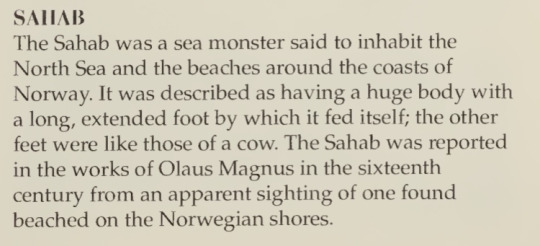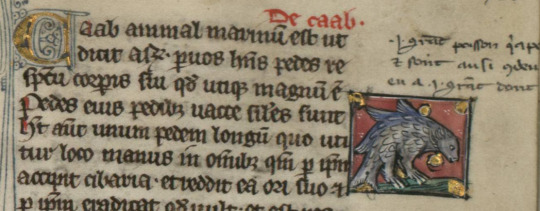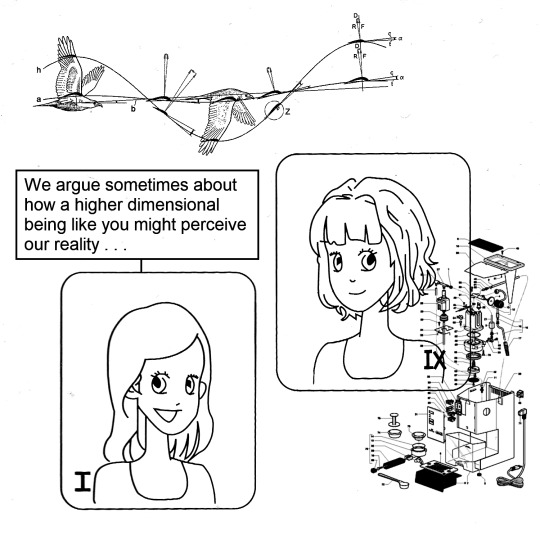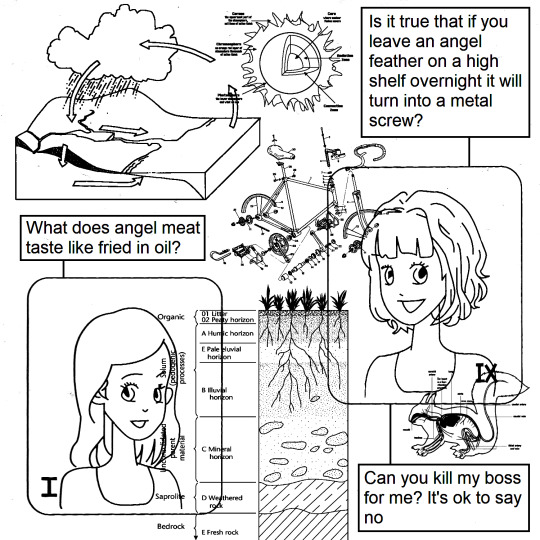Older than 25, younger than the Sun. There's a non-trivial chance that I don't actually exist, which might make some people feel a bit better about all this. Art at fakestbagel.tumblr.com
Don't wanna be here? Send us removal request.
Text
my favorite specific brand of tumblr posts are the ones about touching the stove
3K notes
·
View notes
Text

"a couple of people standing around a building under construction of an unfinished area"
18 notes
·
View notes
Text
is there a specific reason for imagining these things or are you just asking us to have a slightly bad and absurd time for its own sake? like I'm on board still either way but I'd like to know.
imagine having a partner enthusiastically gnaw on your pubes until your pussy has a tonsure.
657 notes
·
View notes
Text

new story up now on INFINITE GOSSIP. LET ME TELL YOU ABOUT MY SAAB X. includes a full-length dramatic reading of the story
64 notes
·
View notes
Text
@mossworm I blog on the topic of LLMs semi-frequently (This stretches out to the tune of 12k+ words disparaging machine learning in healthcare, in particular, but also a much shorter and more readable dissection of why LLMs are not useful generalists in the business world. I also write on plagiarism and LLM usage in academia, which might be relevant.).
Before you were fired, I already had half of a draft together on "chatbots are bad interfaces for databases". I've updated the draft (linked above, not yet complete, 'XXX' markers indicate points to revise or update) to specifically center on this iChatBio fiasco.
At this point, I don't think anything on the topic would be complete without input from you.
If you're interested in reviewing the draft for accuracy, or having a chat about this (on or off record, pseudonymous or otherwise), ping me — my DMs should be open, and I also have a protonmail account for stuff like this ([email protected]).
My former boss and coworkers are not really talking to me like a person anymore, so I assume they've been threatened by HR to stay quiet. This is all very normal and proportional to my heinous crime of asking why we needed an AI chatbot to do database searches. I'm tired. AI hucksters are sad.
565 notes
·
View notes
Text
GUYS NEW SHARK JUST DROPPED

Well, technically it's not new : it's a nurse shark. What's new, however, is that it's the first xanthic (imagine albinism but in yellow) nurse shark ever found !! Not only it's not common AT ALL to find fishes with xanthism (it's the first cartilagenous fish ever recorded with this type of genetic "anomally"), but if it's there and still existing as an adult, it means the species is chill-ish with other predators (it probably would have been eaten by then). Its eyes are white so it can also be a form of albinism, in addition to xanthism !!!!!
And most of all : ITS SO CUTE !! AND IT'S SUCH A COOL FIND !!
Please if a marine biologist or someone with more info can interact with this post to feed me some more info or correct me on wrong infos i'e given I'd love it !
(Also if you have pics of animals with xanthism, it's also very appreciated!!)
25K notes
·
View notes
Text
i wrote this quite late, and truly knew it was not a good post, but it is still a problem that i typed this in to begin with

98 notes
·
View notes
Text
"sexy" and "fat" are secretly synonyms if you didn't know
847 notes
·
View notes
Text
hello my fellow Horror And Houses fans.... i have come to recommend the book "horror in architecture" and its sequel "horror in architecture; the reanimated edition" by joshua comaroff and ong ker-shing to you all. ive been reading horror in architecture for the past couple days and it is excellent
20K notes
·
View notes
Text
i think the way that people become weirdly sensitive about exposing feet once they attain knowledge of foot fetishists honestly reveals something interesting about their views on sex and sexualization
4K notes
·
View notes
Text
Creature Metamorphosis - the Curious Case of the Cahab
I've said it before, and I will testify under oath - the study of mythical creatures is the study of people, not animals.
There is a persistent misconception (mythconception?) that medieval explorers were going out there, seeing weird animals, and, struggling to comprehend them, came up with all kinds of silly stories.
The truth is more complicated. In a lot of cases it's not about actually misconstruing real things, but recopying Classical accounts over and over until the become unrecognizable. In the process, we'll get to explore how language affects creature accounts, how mistakes become real, and how seemingly good-faith additions snowball. And, of course, the importance of primary sources.
Instead of looking at something well-known like dragons or unicorns, let's take a look at the cahab, whose origin was explored in detail by Gauvin et al. (2013).
If you've ever read Rose's Giants, Monsters, and Dragons (and if you read this blog, chances are you're familiar with it), you might have seen this.

SAHAB The Sahab was a sea monster said to inhabit the North Sea and the beaches around the coasts of Norway. It was described as having a huge body with a long, extended foot by which it fed itself; the other feet were like those of a cow. The Sahab was reported in the works of Olaus Magnus in the sixteenth century from an apparent sighting of one found beached on the Norwegian shores. (Rose, 2000)
Hmm, alright, that's interesting. Sounds like it could be a beached whale? Neat! Where did this story come from? Rose (2000) mentions Olaus Magnus but only cites Barber and Riches (1971). Their entry for this is as follows.

Sahab Described by Olaus Magnus in the sixteenth century as a sea-beast with small cow's feet and a large body found off the Norwegian coast. One long foot was used as a hand for feeding and for self-defence. It was amphibious, breathing in in the water and out in the air. It could also spout like a whale. (Barber & Riches, 1971)
The first thing I'd like to point out is what I like to call "detail drift", or the "stands-to-reason additions", or "snowballing details". A "large body" becomes a "huge body". Details of being amphibious, of spouting are lost. Instead we are told it was based on an "apparent sighting". I mean, stands to reason, right? It makes sense. Surely that was what was behind it.
Where did Barber and Riches (1971) get it from? This one leads directly to a primary source, Olaus Magnus himself. The English translation of Olaus Magnus' Compendious History tells us the following.
There is also another Sea-Monster, called Sahab which hath small feet in respect of its great body, but he hath one long one, which he useth in place of a hand to defend all his parts; and with that he puts meat into his mouth, and digs up grass. His feet are almost gristly, and made like the feet of a Cow or Calf. This Creature swimming in the water breathes, and when he sends forth his breath, it returns into the Ayr, and he casts Water aloft, as Dolphins and Whales do. (Olaus Magnus, 1658)
Makes about as much sense as anything! So clearly silly old Olaus Magnus had seen something bizarre out at sea and explained it the best way he knew how. Because medieval explorers or whatever. Case closed!
... right?
Don't look at how long this post is, keep reading
Something is fishy about this. And I don't mean it as a pun, either. The thing is, Olaus Magnus was more than happy to populate Scandinavia with creatures plagiarized borrowed from other, older authors. And the first clue is in the name.
The French version of Olaus Magnus' work gives it a different name.
Il y a un autre monstre marin, appelé Cahab, lequel a de fort petits piés, pour la proportion du cors... (Olaus Magnus, 1561)
Huh. So it's called Cahab here. Is the English name a typo? It may well be. The Latin text starts like this.
Est & aliud monstru marinu secundu Alber. lib. XXIII l. de animal. Cahab dictum, pedes parvos habens respectu magnitudinis corporis sui... (Olaus Magnus, 1555)
Yeah that tracks, so it is Cahab in the original too and
wait what
Est & aliud monstru marinu secundu Alber. lib. XXIII l. de animal.
Are you saying the English and French translations literally cut out the part where he tells us where he got this from???????
See what I mean? There are layers to this.
So, following Gauvin et al. (2013), who track this bizarre transformation, Olaus Magnus never did see or claimed to see a cahab. He merely borrowed it from Albertus Magnus, who had this to say.
Cahab animal marinum esse perhibetur parvos habens pedes respectu corporis sui... (Albertus Magnus, 1920)
But the trail isn't getting cold yet. Gauvin et al. (2013) indicate that Albertus Magnus got this from Thomas de Cantimpré, who instead refers to the caab.
Caab animal marinum est, ut dicit Aristotiles, parvos habens pedes respectu corporis sui, quod utique magnum est... (Cantimpré, 1280)
In other words, "Caab is a sea animal, as says Aristotle, whose legs are small in proportion to its body, which is huge”. Once again, a citation has been lost by someone repeating it.

The caab in Cantimpré's Liber de Natura Rerum, accessed here.
So where did this thing comes from? He does say it's from Aristotle, but Aristotle doesn't mention caabs, does he?
Would you believe an elephant?
As Gauvin et al. (2013) explain, Cantimpré is the origin point of the caab/cahab/sahab, and it originated in a misreading of Aristotle.
Specifically, a misreading of a Latin translation of Aristotle by Michael Scot, which had been translated from an Arabic translation of Aristotle from the original Greek.
Now! Listen carefully Bond...
Scot retained Arabic words in his translation (maybe he didn't know what they meant? Or thought they just looked better? Can't blame him). In this case:
et habet duo cahab parva respect magnitudinis corporis sui (cited in Gauvin et al. (2013))
He's saying, in the description of the elephant, that it has two "cahab" that are short compared to the rest of its body. Cahab is a transliteration of كعب, which is a bone in the ankle. So in other words, elephants have small ankle bones.
Except!
When Cantimpré read this, according to Gauvin et al. (2013), he did not recognize the word cahab. Instead, he interpreted it as the subject of the verb "habet". So instead of "and has two ankle bones that are small", it became "and the caab has... feet I guess? That are small".
Then he combined previous details about the elephant - it has a trunk that it uses to spout water! - to create his caab. Which then got transplanted into the ocean around Norway. Somehow.
And there you have it, a supposed "apparent sighting" of a "beached" animal that in reality is a bunch of snowballing translation errors. Olaus Magnus never saw one, and neither did anyone else.

Of course, when I painted my cahab, I had to make it as much like a floppy elephant as possible. :3
References
Aristotle, Cresswell, R. trans. (1862) Aristotle’s History of Animals. Henry G. Bohn, London.
Barber, R. and Riches, A. (1971) A Dictionary of Fabulous Beasts. The Boydell Press, Ipswich.
de Cantimpré, T. (1280) Liber de natura rerum. Bibliothèque municipale de Valenciennes.
Cuba, J. (1539) Le iardin de santé. Philippe le Noir, Paris.
Gauvin, B.; Jacquemard, C.; and Lucas-Avenel, M. (2013) L’auctoritas de Thomas de Cantimpré en matière ichtyologique (Vincent de Beauvais, Albert le Grand, l’Hortus sanitatis). Kentron, 29, pp. 69-108.
Magnus, A. (1920) De Animalibus Libri XXVI. Aschendorffschen Verlagbuchhandlung, Münster.
Magnus, O. (1555) Historia de gentibus septentrionalibus. Giovanni M. Viotto, Rome.
Magnus, O. (1561) Histoire des pays septentrionaus. Christophle Plantin, Antwerp.
Magnus, O. (1658) A compendious history of the Goths, Swedes, and Vandals, and other Northern nations. J. Streater, London.
Rose, C. (2000) Giants, Monsters, and Dragons. W. W. Norton and Co., New York.
Unknown. (1538) Ortus Sanitatis. Joannes de Cereto de Tridino.
465 notes
·
View notes
Text




To the Rental Property Shower, With Love (2025)
1K notes
·
View notes
Text
It's really fucking funny that some people honestly think cutting government budgets and staffing is by itself a good solution for corruption. It's like the product of a baby-brained thought process that goes "Corruption is when government has power and does bad stuff, so less government with less power means less bad stuff". There's a complete failure to reckon with the state as an actual set of institutions that produce outcomes based on their organisation and function; how else could you think that reduced pay and oversight is going make people less inclined to engage in corrupt practices? It's the same sort of abstract thinking around governance that allows pundits to throw around terms like "big" and "small government" as though they mean anything but vibes
933 notes
·
View notes
















